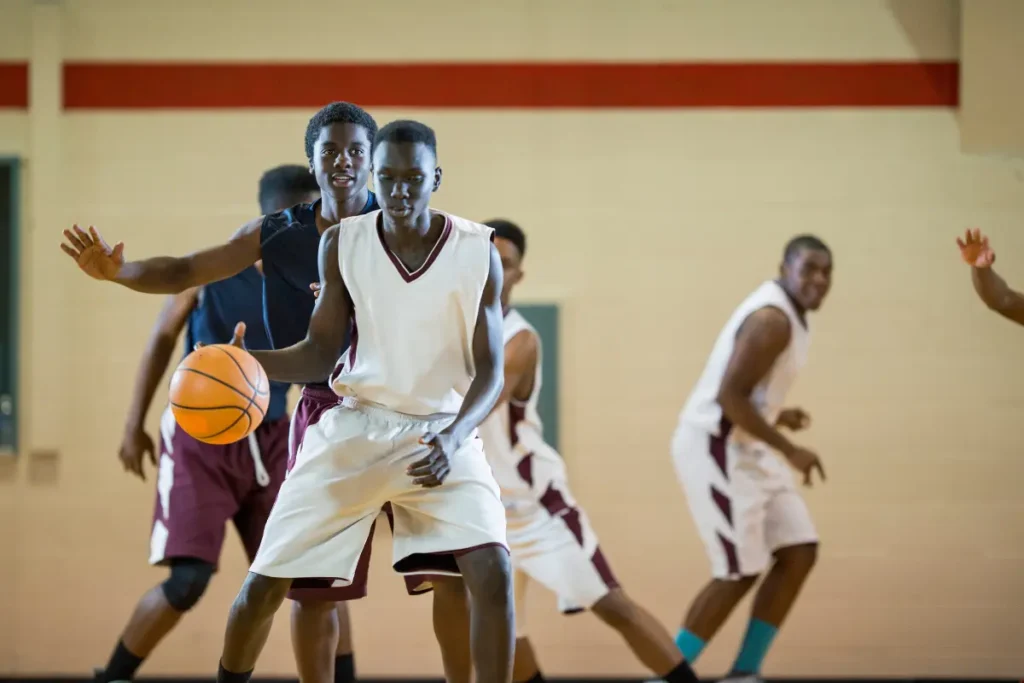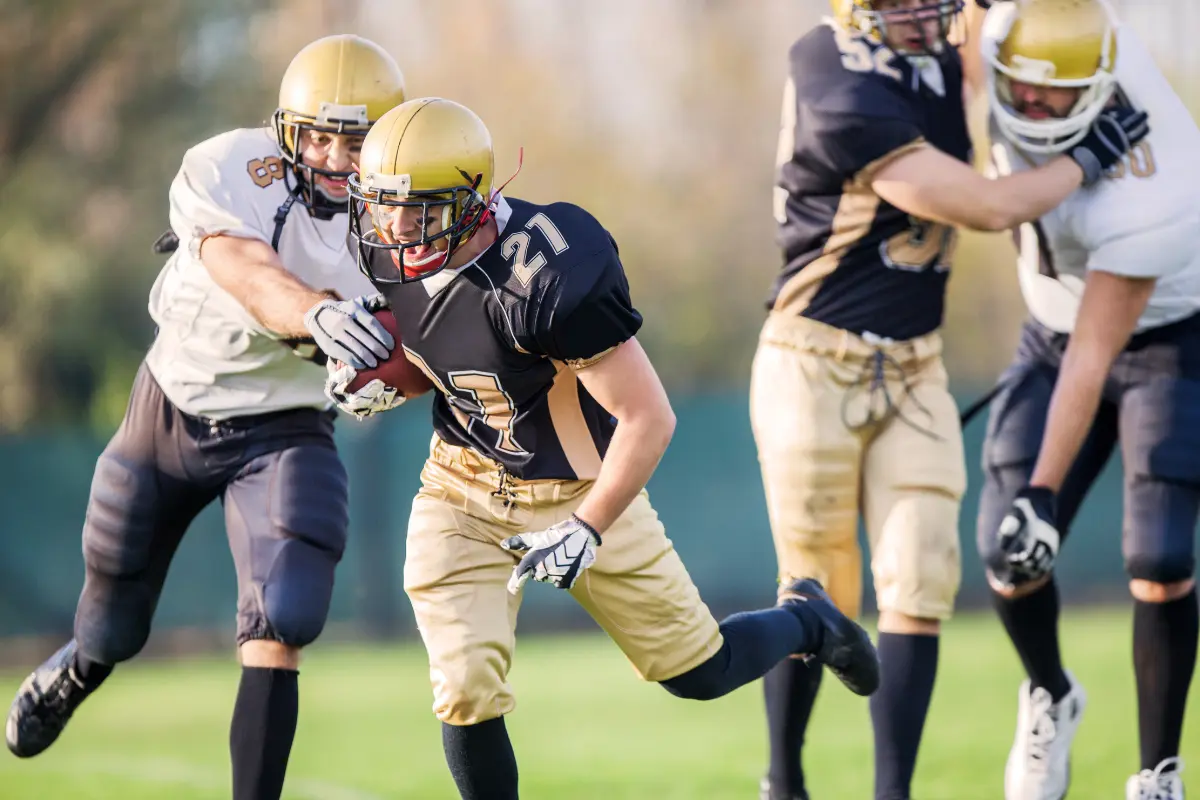Why College Athletes Should Be Paid? College athletes are the driving force behind billion-dollar athletic programs yet they remain amateur competitors. This lack of compensation raises fairness concerns. While universities and the NCAA reap notable profits sportswomen possibility injury and neglect academics due to demanding schedules. Promoters argue that paying college athletes would recognize their contribution provide financial security and allow them to focus on their education.
10 Reasons Why College Athletes Should Be Paid?
Million Dollar Students Minimum Wage Reality: College athletes generate massive income but their “amateur” status leaves them juggling classes exhausting practices and the dream of going pro all while struggling to make ends meet. Shouldn’t their dedication be worth more than just room and board?
Exploiting the “Love of the Game”: Universities and the NCAA speak about the “pure love of the game” yet coaches and athletic directors rake in millions. Shouldn’t the heart of the game the athletes themselves be allowed to share in the financial rewards they help create?
Bodies on the Line Futures at post: The physical demands of college athletics are cruel. These young people risk career-ending injuries for our entertainment. Should they not be repaid for the possible long-term impact on their health and well-being?
Student by Day Gladiator by Night: The time devotion to college athletics is akin to a full-time job. This leaves precious little room for academics and the “student-athlete” ideal becomes unbalanced. Fair compensation could empower athletes to prioritize both education and their sport.
NIL: Name Image Everyone Else Profits : The NCAA tightly controls athletes’ names images and likenesses (NIL). This means they can’t profit from their brand while corporations and universities do. Shouldn’t athletes have control over their own identity and a chance to capitalize on their hard-earned fame?
Education Should not be a Game: Athletic scholarships are a lifeline, but they often leave gaps. economic repay could be the safety net athletes need to focus on their studies finally replacing the stress of making ends meet with the freedom to pursue academic success.
Leveling the Playing Field: Many college sportspersons come from needy backgrounds. just pay could help overpass the economy generate a more fair playing field and attract a broad range of skilled individuals to the sphere of college sports.
Professional Performance Amateur Paycheck: College athletes perform at a near-professional level generating excitement and revenue. Shouldn’t their compensation reflect the professional nature of their contributions?
Building Financial Literacy: Learning money management skills is crucial for young adults. Receiving compensation would allow athletes to develop financial responsibility a valuable skill that translates to life beyond the playing field.
A Fairer Share for a Fair Game: College athletes wouldn’t exist without the dedication and talent of the athletes. Paying them is simply a matter of fairness. It is time to ensure everybody who gives to the billion-dollar industry receives their fair share.

- No Pay for Play: The NCAA’s Compensation Rules for Athletes
The NCAA’s limitation on college athlete compensation goes over a simple “no pay” rule. It’s a complex web of regulations that have evolved in response to legal challenges public pressure and the ever-growing financial smack of college athletics.
Amateurism
A Contested Ideal in College Sports Amateurism the basis of the NCAA’s athletic model has been the origin of discussion for decades.
Origins and Evolution: The concept of amateurism in sports arose in 19th-century Britain rooted in the idea of gentlemen participating for the love of the game, not financial gain. This idea was linked to social class with participation seen as a privilege of the wealthy. Over time the definition broadened to include anyone who didn’t receive direct payment for playing.
The NCAA’s Embrace: The NCAA adopted the amateur model depend on its founding in 1906. It served a reason to create a level playing field for universities and prevent the professionalization of college athletics. However, critics argue it’s become out of date considering the vast sums of money generated by college sports and the professional-level training athletes undergo.
Behind Just No Pay: Amateurism goes over a simple “no pay” rule. It dictates a way of life for college athletes. They are expected to prioritize academics and maintain a certain image. Compensation of any kind even for endorsements or sponsorships was traditionally prohibited.
Exploitation vs. Purity: Proponents of amateurism argue it preserves the “purity” of college sports preventing them from becoming solely about money. However, critics see it as a form of exploitation. Athletes generate billions for universities and the NCAA yet they remain financially restricted.
The Rise of Professionalism: The lines between amateur and professional are softened. College athletes train year-round dedicate huge time to their sport and face possible career-ending injuries all the time living confined to monetary rewards. This lifts questions about the fairness of the amateur model.
The future of amateurism in college sports remains undetermined. While the NCAA fights with NIL rules the core truth of amateurism continues to be discussed.

Name Image Likeness (NIL)
Name Image and Likeness (NIL) refers to an athlete just to power and profit from the trade use of their identity.
Name: This encompasses the athlete’s legal name nickname or jersey number.
Image: This refers to any visual representation of the athlete including photographs videos or even caricatures.
Likeness: This is a broader concept that captures any aspect of the athlete’s persona such as their playing style signature moves or even their voice.
This conveys they could not sign bear deals arise in promotions or monetize their social media presence. However, in a landmark resolution, the NCAA raises this ban to accept the growing commercial value of college athletes.
The New Reality:
The NIL landscape is motionless with each state having its own rule governing athlete compensation. This creates a patchwork order with varied rules and possible loopholes.
Endorsement Deals: College athletes can now sign support deals with companies that authorize them to appear in commercials or promote products using their NIL.
Social Media Monetization: Athletes can leverage their social media following to generate income through sponsored posts brand collaborations or even launching their clothing lines.
Public Appearances: Athletes can charge for looks to the camps clinics or autograph signings.
Despite the positive developments, NIL presents some challenges:
Uneven Regulations: State-by-state variations in NIL laws create confusion for athletes and potential complications for national brands.
Pay-to-Play Concerns: The rise of “booster collectives” – groups of wealthy donors pooling money to lure athletes with NIL deals – raises concerns about unfair advantages for well-funded schools and potential pay-to-play scenarios disguised as NIL deals.
Exploitation and Predatory Practices: College athletes may be vulnerable to exploitation by unscrupulous agents or brands.
The Future of NIL:
The NIL countryside is always developing. The NCAA is still wrestling with how to successfully control booster activity and establish fair competition. It’s key to begin clear instructions and defense for athletes navigating this new world of commercial chance.
Why College Athletes Should Be Paid? No Job Policy
The term “no job policy” can have a few different explanations depending on the context.
No Job No Job: This mentions a policy applied by some employers that mandate vaccination against a specific sickness typically COVID-19 as a state of employment. These strategies have been controversial with fights for and against their legality and effectiveness.
Zero Hour Contract: This is a type of utilization agreement where there is no guaranteed minimum number of hours. workers with zero-hour contracts are essentially “on call” and may be provided very few or no hours at all. These contracts can be precarious for workers as they lack job safety and compatible income.
It’s important to consider the context in which you hear “no job policy” to understand its specific meaning.
- NCAA Athlete Pay: Limitations & Questions
The NCAA’s limitations go beyond simply restricting financial support for athletes. It’s a complex web of rules aimed at maintaining the concept of “amateurism” in college athletics. Here’s a breakdown:
Focus on Scholarships: The NCAA provides a framework for athletic scholarships that cover tuition fees room and board. However, the full cost of attendance (COA) often includes additional expenses like living expenses books, and equipment. This can leave athletes financially strapped forcing them to juggle academics with part-time jobs.
No Direct Pay for Play: The NCAA strictly prohibits athletes from receiving direct payment for their athletic performance. This means no salaries bonuses or any kind of compensation tied directly to their playing ability.
Educational Benefits vs. Compensation: The NCAA allows for some “educational benefits” for athletes. These can include tutoring financial literacy workshops or internship opportunities. While valuable these aren’t direct compensation for athletic talent.
Why College Athletes Should Be Paid? Criticisms of the NCAA’s Approach:
Exploitation: Critics argue the NCAA model exploits College athletes who generate billions for universities and the NCAA but receive limited financial support.
Outdated Amateurism: The “amateur” ideal is seen as outdated considering the professional-level training athletes endure and the immense revenue generated by college sports.
Lack of Equity: Coaches and athletic directors are well-compensated while athletes the main attraction are restricted from sharing in the financial rewards.
NCAA’s restrictions on athlete compensation are a hotly discussed topic. time the organization strives to keep a balance between scholar and College athletes calls for fairer compensation for athletes are growing noisy. The developed NIL landscape presents both chances and challenges for athletes in the world of college sports.
More Reads: Unlock the Thrill: Top Live Cricket Streaming Apps
Conclusion:
College Athletes Should Be Paid but NCAA limits money support for athletes to scholarships and some academic benefits. This means athletes can’t get paid for playing but a recent change allows them to make money off their name image and likeness. While the NCAA defends this system as promoting “amateur” sports many argue it’s unfair to athletes who generate big profits for colleges.
